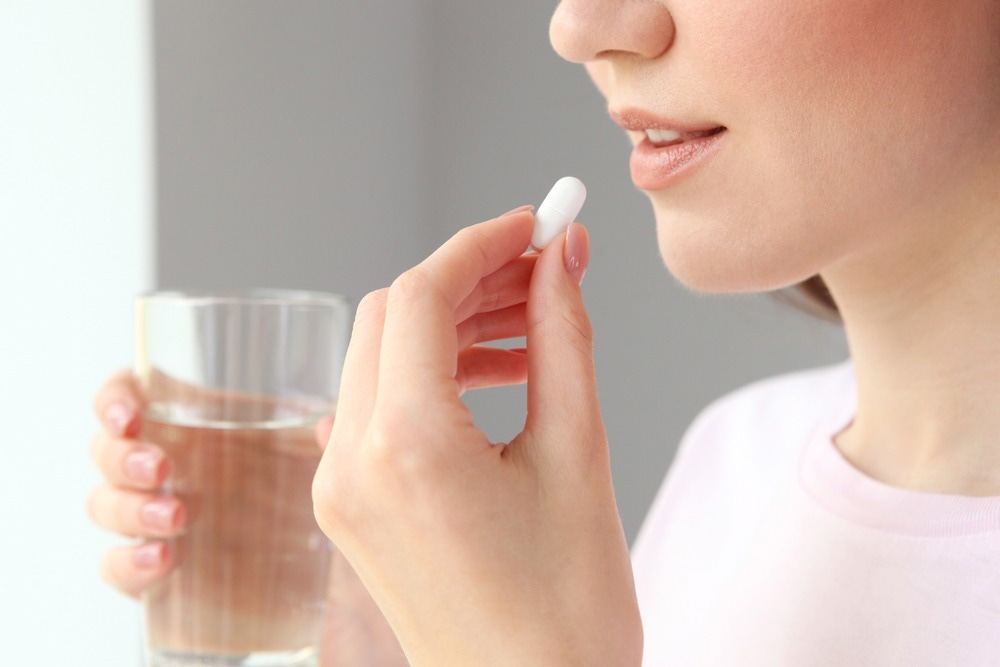Cornell Prime Dots, also called C’Dots, are ultrasmall fluorescent core-shell hybrid silica nanoparticles that have been thought to only be effective when administered intravenously. However, recent studies have demonstrated the possibility of administering them orally.

Image Credit: V/Shutterstock.com
New research detailing this advancement has been published in Advanced Materials under the title, “Overcoming Barriers Associated with Oral Delivery of Differently Sized Fluorescent Core-Shell Silica Nanoparticles".
Because the particles are so small, we always thought it might be possible that they could be taken up in the gastrointestinal tract.
Ulrich Wiesner, Spencer T. Olin Professor, Department of Materials Science and Engineering, Cornell University
Wiesner added, “Patients would likely prefer to take pills orally rather than having to go to the hospital to get an injection. Most of the current cancer therapies are administered by injections. So, the motivation was clearly there.”
Co-lead authors Jacob A. Erstling, Ph.D. ‘22, and Thomas C. Gardinier, Ph.D. ‘19, are both in the Wiesner group and are now at Elucida Oncology, Inc., a New Jersey-based biotechnology company co-founded by Wiesner, in addition to Nirmalya Bag, a former postdoc in the Department of Chemistry and Chemical Biology in the College of Arts and Sciences and now on the faculty at IIT Kharagpur in India.
In addition to the possibility of C'Dots being administered orally for cancer and other therapies, the research has sparked renewed interest in ultrasmall silica as a health benefit. Silica is the most prevalent oxide in the Earth's crust, and it may be found in a variety of “healthy” foods such as green beans, bananas, and leafy greens.
Wiesner further added, “Ultrasmall silica may actually be a natural material that via intestinal uptake has been circulating in animals over millions of years in evolution and therefore may provide benefits to the body in the same way as small amounts of iron, copper, calcium, magnesium and other minerals are known to be important for our well-being.”
C’Dots’ therapeutic potential has resulted in several notable discoveries, including their capacity to trigger ferroptosis in nutrient-deprived cancer cells without a lethal chemical payload. The most recent C’Dot success occurred earlier this year when researchers discovered that combining antibody fragments and medication with the dots permanently cured gastric cancer in mice.
The main obstacles to oral administration of C’Dots have been stomach acid, intestinal mucus, and intestinal epithelium. By preventing extraneous substances, including nanoparticles, from diffusing into the intestinal epithelium, mucus shields the body against illness. The main barrier preventing larger things from passing through is the epithelial lining, which is mainly made up of enterocytes that form tight junctions.
In a series of experiments, Wiesner’s group examined plain nanoparticles with no medicine attached that ranged in diameter from 5 to 50 nanometers. They discovered that particles smaller than 20 nanometers, such as C’Dots, had sufficient permeability to pass through the mucosal layer and the epithelium to be administered orally.
Subsequently, the team conducted oral delivery tests on a limited cohort of mice, observing good renal clearance and bloodstream absorption without the characteristic protein corona seen with other drug carriers.
Wiesner emphasized that data demonstrating oral delivery absorption in animals does not imply that human outcomes will be the same, but “the fact that we see in animals that the particles are being taken up in the bloodstream is significant in and of itself.”
The team also created a polymer-coated tablet to shield medication-equipped C'Dots from stomach acid deterioration.
The capacity of C'Dots to cause ferroptosis made Wiesner consider the potential health advantages of silica, which can be found in various healthy meals. Saurabh Mehta, the Janet and Gordon Lankton Professor in the College of Human Ecology’s Division of Nutritional Sciences, advised Wiesner.
“We asked him, ‘What do you know about anti-tumoral effects in an environment where nutrition is rich in biogenic silica products? And he said, ‘We don’t know; nobody ever asked that question,” Wiesner stated.
Mehta said more research is necessary to determine how silica affects the immune system and gut microbiome.
Silica is ubiquitous in our food system, with its use in different stages of food production, processing and packaging including as a food additive. It’s generally considered to be safe; some studies also show that they may have biological activity and health benefits, which need to be further studied.
Saurabh Mehta, Janet and Gordon Lankton Professor, Division of Nutritional Sciences, College of Human Ecology, Cornell University
Richard Cerione, the Goldwin Smith Professor in the Department of Chemistry and Chemical Biology (A&S); Robert Weiss, professor of molecular genetics in the Department of Biomedical Sciences, in the College of Veterinary Medicine; Barbara Baird, the Horace White Professor in the Department of Chemistry and Chemical Biology (A&S); and numerous former graduate students and postdoctoral researchers from the Wiesner Group are the other contributors.
The National Institutes of Health’s National Cancer Institute provided funding for this study.
Journal Reference:
Erstling, J. A., et al. (2023) Overcoming Barriers Associated with Oral Delivery of Differently Sized Fluorescent Core-Shell Silica Nanoparticles. Advanced Materials. doi:10.1002/adma.202305937